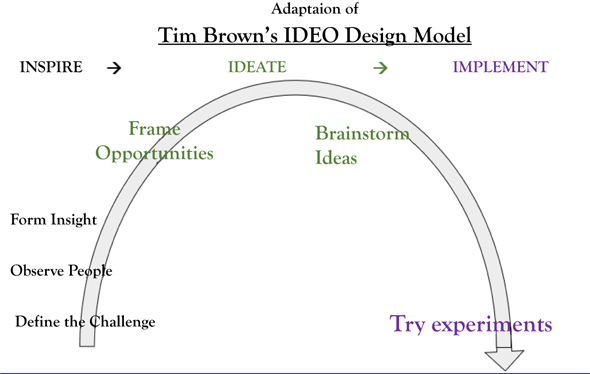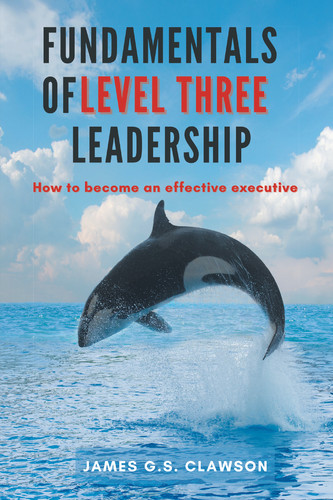Concept
The business world at the end of the 20th and the beginning of the 21st centuries was enamored with the concept of design thinking. Much of this interest was stimulated by IDEO founder Tim Brown’s book, Change by Design.8 Design Thinking can be an elusive concept to those not trained in schools of design. At its core, Brown argues that it takes a human-centered approach to helping people do things easier and better. At IDEO, on of their philosophies is that we can learn most about design by observing closely humans doing the thing we are interested in. Their work arounds and routines will instruct us if we look carefully and those observations can inform better designed solutions.
What was the most elegant design you have ever witnessed? Think a moment and note it here.
Now, please note all the items/aspects/elements that you can think of that went into that design. What made it so elegant? Why were you impressed? How did it make the world better?
When we think of design, we can think of effectiveness and efficiency. Together, these denote elegance for me. An elegant design does a superior job and does it with the least use of resource, and by the way, it looks beautiful.
The concept of design applies, of course, to physical things, but also to services, to systems, to organizations, to processes and coding and regulations, to almost anything. Not just furniture.
Many people, if not most, are satisfied with good enough.9 Herb Simon popularized this concept in Administrative Behavior. How many times have you said to yourself, “That’s good enough”? What proportion of the time do you strive to do your absolute best?
Getting the job done is only part of design thinking. In fact, design thinking wants to be sure what the job is. Is it getting more people to recycle or something larger like getting people to live sustainably? Brown’s design thinking process encourages people to think and discuss carefully what the project is really trying to do.
In addition to elegance, we can think of beautiful designs in terms of their efficiencies. How many times do you see people or companies or governments throwing money at something without apparent regard for the cost? Efficiency often takes a back seat to effectiveness in the satisficing world. In a design thinking environment, more time and energy would be put in up front, similar to the concept of concurrent engineering or integrated product development teams, in the design phase, in order to save cost and inefficiencies later in a product/process life cycle.
So, elegant designs are, I say, relatively simple, efficient, and beautiful as well as functional.
Brown thought of design in three phases: inspire, ideate, and implement. What would be the inspiring purpose of our work? What exactly is the real, core, inspiring goal of this project? The second phase consisted of steps to find multiple ways of solving the inspiring challenge. Finally, he argued, without implementation, ideas are just ideas.
Tim Brown’s process for design thinking consisted of the following:
1. Define the challenge carefully. Be sure to get below the immediate and obvious and identify what you are really trying to do.
2. Observe People. Spend time watching people who are living at the core of what you are trying to do. Take photos, interview, watch, reflect.
3. Form Insights. Use inductive logic to uncover what your observations are telling you.
4. Frame Opportunities. Look for ways that your insights can connect to create synergistic positive possibilities.
5. Brainstorm Ideas. Find as many associative ideas as you can to the core concept. While this technique has been around for a long time, most facilitators don’t manage the process well. Non-judgmental, more is better than less, free flowing.
6. Try Experiments. Try lots of little experiments to see what works and what doesn’t. Apply them in the field.
Example
Brown’s organization, IDEO, offers the example up front of helping a large financial services company develop new products to serve women with children. They noticed in the observation phase that many customers would round their bills up to the nearest dollar so they didn’t have to futz with small amounts and the difficulty of writing longer checks. Based on that observation, IDEO recommended a new product that allowed customers to put the small differences between actual bill and payment into a savings account—making it easier for households to add to their nest eggs.
The unusual and elegant designs of SAS of Cary NC has been the subject of case studies by Stanford professor, Jeff Pfeffer.10 SAS has a number of interesting, superior design features including no performance reviews, on-site medical care, on-site schools, and park-like grounds.
On the other hand, there are many examples of bad designs. I had a client once who had a process that involved 13 steps to get a hammer out of the supply room. One could have manufactured a hammer quicker. I had another client who had 81 steps to fire someone. Jack Welch’s “Work-Out” effort in the late 1980s and early 1990s was a 10 year and extensive attempt to get rid of bad process designs.
You may remember the “Rube Goldberg” cartoons showing odd, ill-conceived designs that make us laugh. See below for one example and its source. There are many images of such designs online.
Diagram
The Tim Brown/IDEO design thinking process adapted:

Challenge
1. Identify some poor designs in your life and in your organization.
2. Attend an IDEO design thinking seminar.
3. Find a better design for one or more of the bad designs you have identified.
4. Read Tim Brown’s book, Change by Design.
8 https://amazon.com/Change-Design-Transforms-Organizations-Innovationebook/dp/B002PEP4EG/ref=sr_1_1?s=books&ie=UTF8&qid=1486692894&sr=1-1&keywords=tim+brown+change+by+design
9 https://en.wikipedia.org/wiki/Satisficing
10 Jeffrey Pfeffer, SAS Institute (A): A Different Approach to Incentives and People Management Practices in the Software Industry, HR6, Stanford Graduate School of Business, Stanford, CA, 1998.
